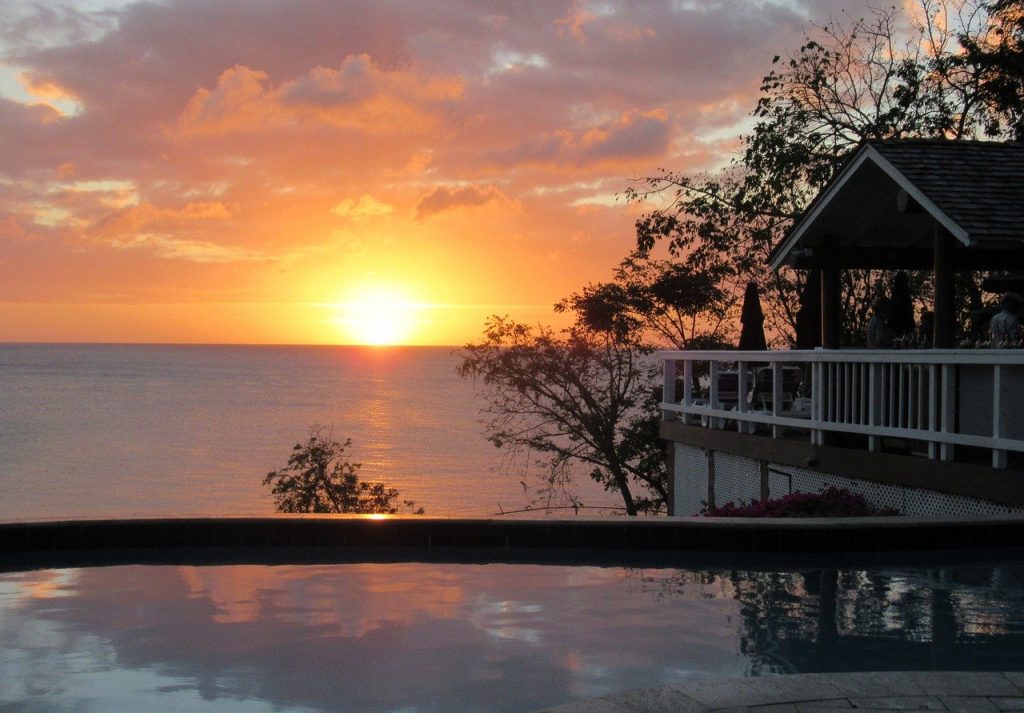Whale Watching In The Azores
As with all the countries that we aspire to tick off the bucket list there are also mammals that live amongst us on this planet that I would love to witness in my lifetime. One of those is the largest of them all – the Blue Whale. I always thought growing up that I would have to be whale-watching miles from land and deep in the heart of one of the world’s great oceans to see this incredible animal but actually, it’s a lot closer and easier than you might think.
The seas around the Azores are some of the very best locations to observe ocean wildlife including in spring, the Blue Whale. To do so, however, it is always best to take guidance from the experts. The AITO (Association of Independent Tour Operators) specialist Archipelago Choice features a range of really fantastic niche destinations and also provides just such expertise with their dedicated whale-watching tours that include a four-day whale and dolphin watching trip, a marine biologist and whaling history lesson as well as a full day guided tour of the main capital San Miguel.
Here is what they have to say about a destination and an experience that I know I would never forget and I bet you wouldn’t too
The First Choice For The Azores
Over the past three decades, the Azores islands have transformed into Europe’s leading whale-watching destination.
Most of us are familiar with the Azores by name but locating them on a map is often a little trickier. These unique islands lie 1500km off the coast of Portugal; nine wonderfully diverse, unspoiled landscapes which form the most-westerly outpost of Europe.
From the first settlers arriving in the 15th Century, these rural island communities have strived to strike a difficult balance between sustainable island living whilst taming a wild and volcanic landscape. The islands’ calderas, crater lakes, lava caves and geothermal pools have long been an attraction for Europeans looking to escape the busy mainland. And as you’d expect, the Atlantic Ocean has always loomed large in the Azores’ psyche.

Whale Watching Tourism
The seas around the Azores are one of the best places to observe cetaceans and ocean wildlife: resident species of bottlenose dolphins, north-Atlantic spotted dolphins, sperm whales, loggerhead turtles, blue sharks, storm petrels, and Cory’s shearwaters can be seen throughout the year. For whale and dolphin watchers, peak season begins in March and runs right through to the end of October., and the highlight for many is in April when the larger migratory species are passing through the big blue whales and fin whales heading north for the summer.
Whale tourism has become a crucial part of the islands’ economy. Whale watching helps to support cetacean studies and conservation via MONICET: a voluntary research organization that collates the sightings data from whale-watching crews across the whole of the Azores. This data provides a year-on-year record of the lives of the resident whales and dolphins, and whale tourism plays a vital role in supporting their continuing research.
Azores Attractions
Of the nine islands, Sao Miguel, Faial and Pico are three of our favourites for whale watching. Being the largest island, Sao Miguel has the most to see and do when you’re not at sea – particularly if you love keeping active and enjoy kayaking, diving, hiking, and biking.
The Furnas Valley in the east has over thirty geysers and mineral-rich springs and is home to the Azores’ most famous geothermal swimming pools. To the west is the island’s largest caldera Sete Cidades – a must-see destination for most visitors to the islands for its extraordinary beauty.
History To Discover
The small and unassuming island of Faial is also one of our favourite whale-watching locations. Faial holds a surprisingly significant place in European history. Its natural harbour was a popular resupply point for Portuguese sailing fleets in the 16th & 17th Centuries – and 20th Century seaplanes making the first trans-Atlantic crossings in the 1930s.
The 19th Century saw the island’s capital Horta become the H.Q. for the large telegraph companies whose new technologies were connecting the old world with the new – their under-sea telegraph cables which stretched from the UK and Germany to the USA and Canada all connected in mid-Atlantic Faial. In World War II, H.Q. Horta and its telegraph network became a vital communications hub connecting the D-Day landing beaches to the US during the battle of Normandy in 1944.
Volcanic Landscapes
Faial is also home to one of the most striking volcanic landscapes in the Azores at Capelinhos – the site of a major volcanic eruption from September 1957 to October 1958.
Over 2km² of land was created – however more than 300 homes were also destroyed, and the eruption led to the emigration of 4000 residents (mainly to North America).
A Sustainable Future
The neighbouring island of Pico is where Azorean whale watching all began; in the imposing shadow of Mount Pico, Portugal’s highest peak at 2,351m.
Serge Viallelle emigrated to the island from his native France when whale hunting ended in the 1980s. Settling in Lajes on Pico’s south coast, he saw a new future for the island’s whale spotters – by combining their skills and experience with his passion for marine conservation, he demonstrated that whale tourism was the sustainable way forward. Sadly, Serge passed away at the end of 2019 but his legacy lives on – not only in Pico, but across the whole of the Azores.
Contact Information
Archipelago Choice – have been exploring the world for over 20 years, creating ATOL-protected imaginative, tailor-made holidays for people who love to travel.
If you’d like to learn more about whale watching in the Azores, contact Paul from Archipelago Choice as follows:
T: 01768 775672
E: paul@archipelagochoice.com
W: www.archipelagochoice.com






















